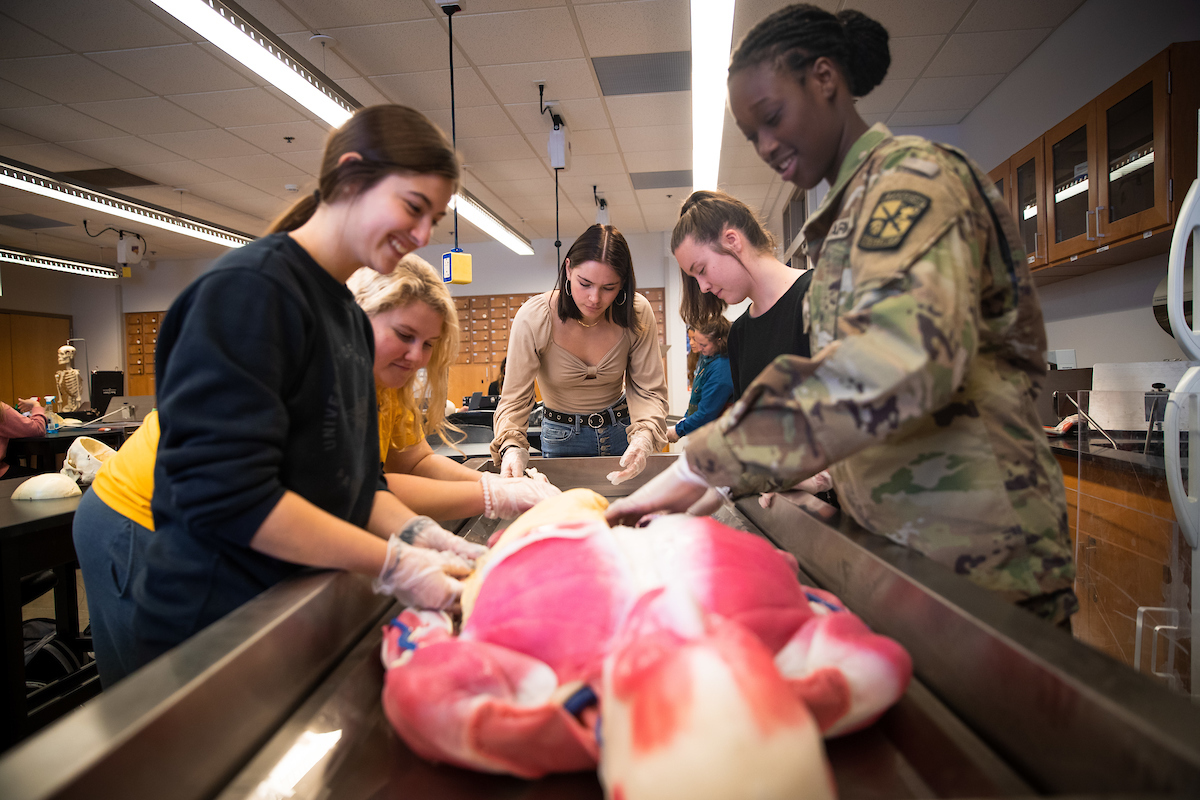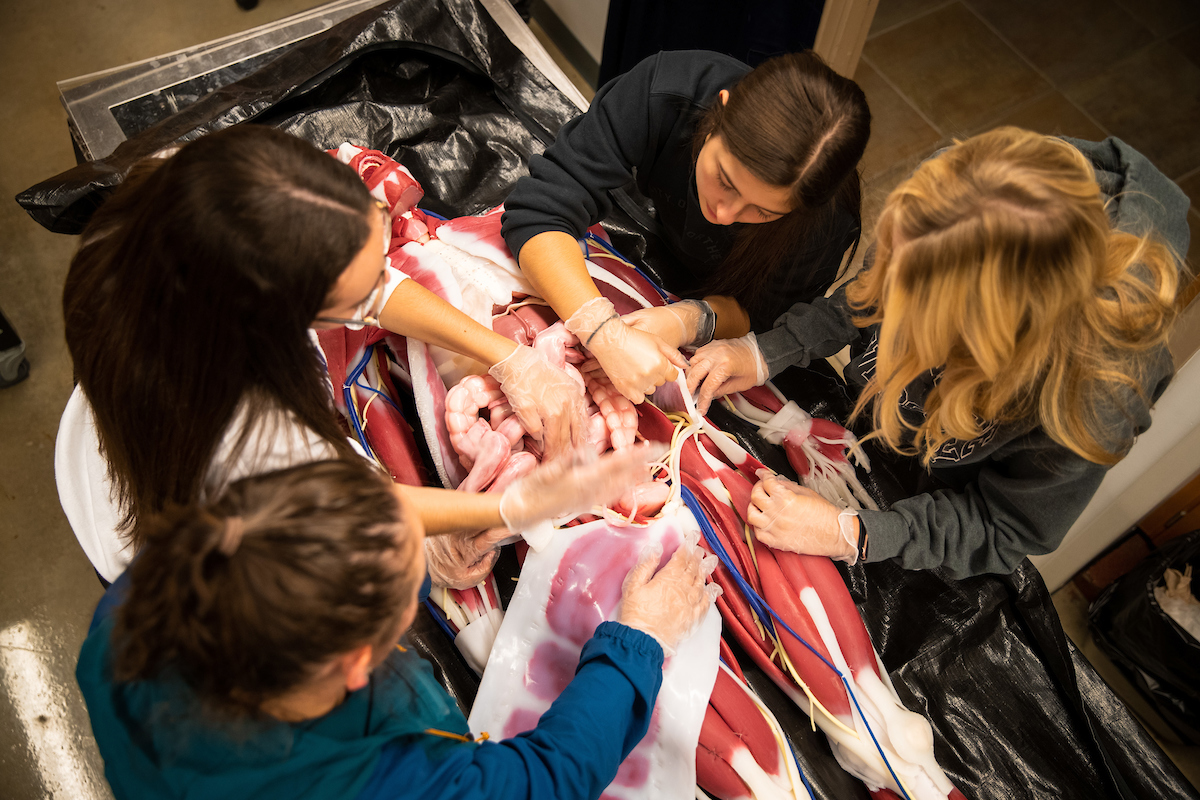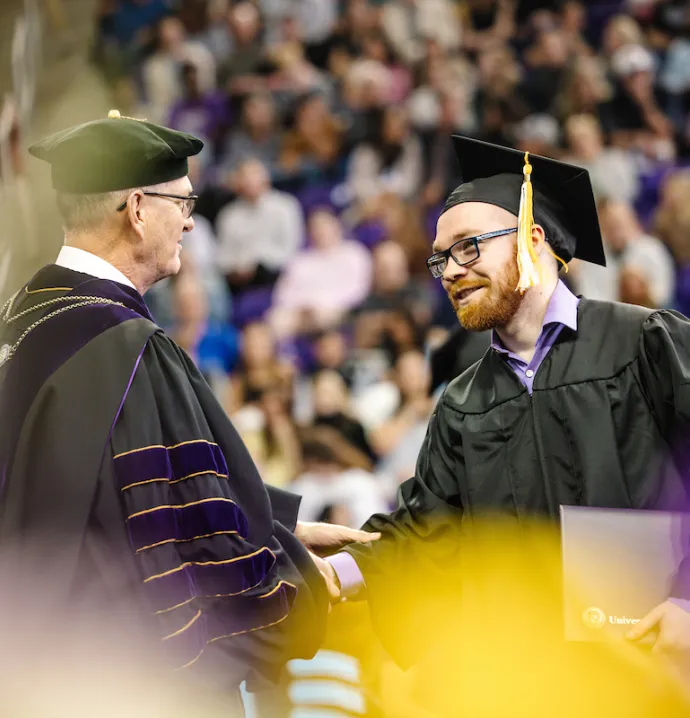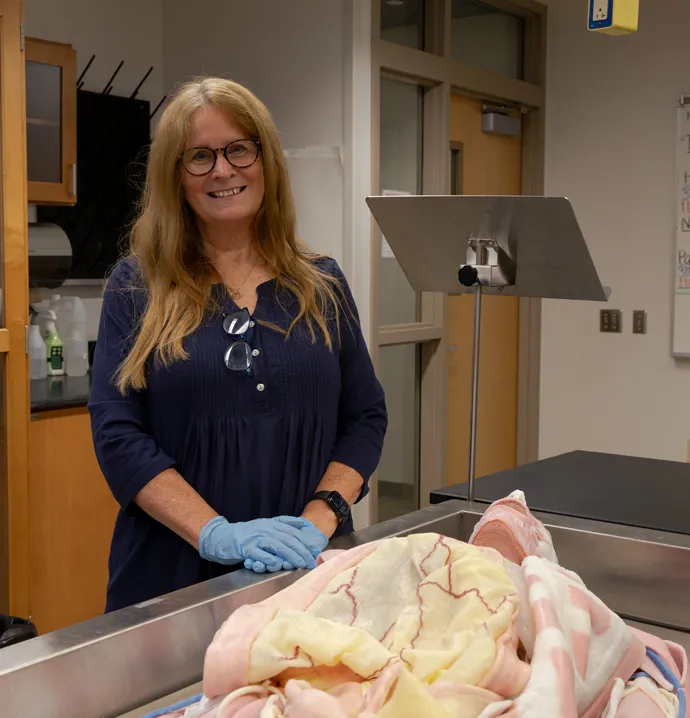UNI is first in the world with newest synthetic human anatomy models, offering students opportunities for hands-on learning
UNI is first in the world with newest synthetic human anatomy models, offering students opportunities for hands-on learning

When it comes to studying human anatomy, there are few options that measure up to the real thing, but for anatomy and physiology students at the University of Northern Iowa, the opportunity to work with synthetic cadavers - also known as syndavers - gets them as close to the real thing as they can get.
UNI was the first school in Iowa, and one of the first in the nation, to use syndavers in its classrooms, and has since become a model for other institutions across the state when it comes to integrating the use of syndavers into its programs.
And now the university is again leading the charge, becoming the first higher-education institution in the world to receive one of the newest generation models, which include improved accuracy in its representation of muscular structures and organ systems, greater durability in vascular and nervous structures and synthetic tissues, or syn-tissues, giving them a life-like feel.
“Since their arrival, we have embraced our syndavers as a critical and indispensable component to both how we structure Anatomy and Physiology I laboratories and how we approach teaching anatomy to our students,” said Nathan Bird, associate professor of biology at UNI. “Syndavers provide a strongly accurate representation of the human body, both visually and tactilely. They are size appropriate, and can be reused and maintained indefinitely with little effort or waste. Optimal for undergraduate-level anatomy across many majors, syndavers have helped us maintain hands-on learning without the drawbacks or complications of virtual or cadaver-based alternative approaches. Assessment scores have increased relative to cat-based dissection, and the students love using them to learn.”
Created with the most realistic hands-on learning in mind, UNI’s syndavers are sophisticated life-sized models that replicate the human body in incredible detail, including individual muscles, tendons, veins, arteries, nerves and organs. The models allow students hands-on access to tissues that feel real, while also helping them feel comfortable with the most detailed experiences in studying human anatomy.

“For me, I think the biggest advantage to working with the syndavers was being able to see how everything - all the internal organs and tissues and other systems - are layered in the body and how they all fit together,” said Collin BohnenKamp, a third-year biomedical sciences major who transferred to UNI from Truman State University in Kirksville, Missouri.
Before coming to UNI, BohnenKamp had some experience studying cadavers. The syndavers, he said, were easier to work with and made it easier for students to remove and manipulate the various parts of the body and explore its internal layout.
“With a cadaver, you’re working on the body of an actual person, and you want to be respectful and make sure you are handling them with care,” he said. “With the syndavers, you of course want to handle them with care so you don’t break them, but there isn’t that constant awareness that you are working on a human and that constant pressure to make sure you are being as respectful as possible. The syndavers give you more freedom to explore and really interact with and articulate the structures of the body.”
Funded by the Roy J. Carver Charitable Trust, the Department of Biology’s Human Anatomy Lab received the first two of four third-generation syndavers now being used in classrooms, alongside the department’s earlier models, to enhance the educations of students in a variety of majors - including biology, chemistry and biochemistry, athletic training, exercise science and psychology - and allow students hands-on access to tissues that feel lifelike while also helping them feel comfortable with the most detailed experiences in studying human anatomy.
“While learning all the structures and systems in the body, I found the syndavers really helped me study and understand their placement and functions,” said Emily Miehe, who graduated with a BA in psychology last semester (Dec. 2022).
As part of her major, Miehe took Anatomy and Physiology I and II at UNI where she had the opportunity to study and interact with the syndavers.
“Just listening to a lecture or reading a textbook about how blood flows through the heart or how a certain bone sits within the body can be hard to grasp, but the syndavers provide a more realistic, hands-on learning experience - with organs similar in size to real-life organs and many other realistic bone, muscle and vessel and vein structures.”
Before acquiring the syndavers, students in health-related majors relied on a combination of hard plastic, immoveable models, two-dimensional pictures and diagrams and feline dissection to study anatomy, but none of those methods can compare to the life-sized, accurate representation and tactile experience the syndavers provide.
“Those previous methods were OK - they got the job done - but they weren’t good enough,” Bird said. “We’re trying to train students in human anatomy so they can then go into health care and part of that training has to include getting them comfortable with human anatomy and confident in their training. Dissecting cats and using diagrams and models, they got us close, but not close enough and that just wasn’t good enough for us.”
On top of that, Bird said the use of human cadavers is not a viable or desirable option for UNI Biology for a variety of reasons.
“As you can imagine, human cadavers are heavily regulated and they are difficult to acquire,” he said. “The number of people who choose to donate their bodies to cadaver programs is far less than the actual need, and when the pandemic hit, it shut down cadaver programs almost completely.”

In the height of the pandemic, Bird said any donated body that had or tested positive for COVID-19 was rejected to prevent potential spread, which drastically reduced the number of viable donations.
On top of that, when all the options were weighed, the syndavers turned out to be the most appropriate option for Biology’s undergraduate-level anatomy classes.
“For one thing, the various systems and structures are much easier to find and identify in the syndavers,” he said. “It’s also important to note there is a certain level of discomfort students have to work through when working with cadavers, that they don’t have to face when using the syndavers.”
Additionally, that discomfort might not be necessary at an undergraduate level, given not all students who go through UNI’s anatomy and physiology classes will go on to medical school or careers in health care.
“I would say the syndavers are actually better to work with during your undergraduate studies because they are very accurate and easy to work with,” said Tyler Steffensmeier, who graduated from UNI in Spring 2022.
“I personally think the syndavers are more appropriate for undergraduate classes because not everyone is going to go into a doctorate or graduate school - they could just be taking the course because they found it interesting - and the syndavers give you a solid foundation without having to experience the discomfort and shock that can come from working with cadavers. Aside from all that, I think it’s also worth mentioning that most colleges don't have cadavers, and most don't have syndavers either, and it really is beneficial for UNI students to have access to something like the syndavers to learn from. They definitely give UNI students a leg up on a lot of other undergraduate programs out there.”
“For us, the syndavers are the best of both worlds - they offer the best approximation to human anatomy and, unlike human cadavers, they require little to no maintenance or regulation,” Bird said. “I am also a firm believer that students have to be able to touch when learning anatomy. That’s actually one of my mantras when teaching - you need to touch it, you need to get your hands dirty and dive in, so to speak. That's the only way to truly learn. So the syndavers for us offer all the benefits and really no drawbacks.”
For Miehe, the opportunity to learn from the syndavers with the help and guidance of UNI’s dedicated instructors, gave her confidence going into graduate school.
“Not only am I so grateful for the opportunity to have learned using the syndavers, but I am also so grateful to have had outstanding instructors who were always willing to help us navigate learning from and studying the syndavers,” she said. “It didn’t matter how many questions I had during lab, my professors were always willing to work with or go over the materials again to answer my questions. Every lab instructor and professor I worked with were so dedicated to helping students gain a great deal of knowledge and understanding from the syndavers, in a way that would allow all students to be successful in their future endeavors.”




